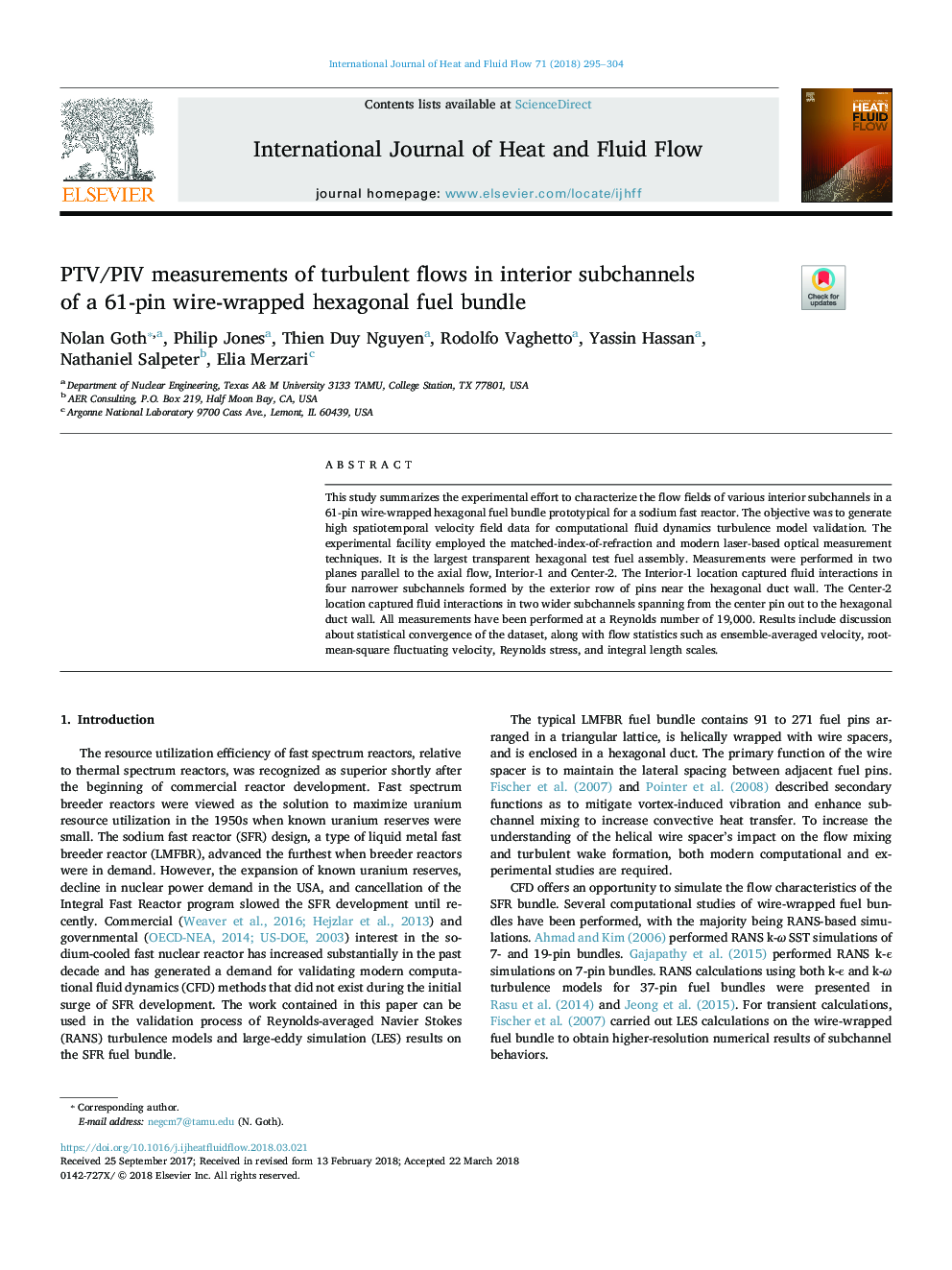| Article ID | Journal | Published Year | Pages | File Type |
|---|---|---|---|---|
| 7053463 | International Journal of Heat and Fluid Flow | 2018 | 10 Pages |
Abstract
This study summarizes the experimental effort to characterize the flow fields of various interior subchannels in a 61-pin wire-wrapped hexagonal fuel bundle prototypical for a sodium fast reactor. The objective was to generate high spatiotemporal velocity field data for computational fluid dynamics turbulence model validation. The experimental facility employed the matched-index-of-refraction and modern laser-based optical measurement techniques. It is the largest transparent hexagonal test fuel assembly. Measurements were performed in two planes parallel to the axial flow, Interior-1 and Center-2. The Interior-1 location captured fluid interactions in four narrower subchannels formed by the exterior row of pins near the hexagonal duct wall. The Center-2 location captured fluid interactions in two wider subchannels spanning from the center pin out to the hexagonal duct wall. All measurements have been performed at a Reynolds number of 19,000. Results include discussion about statistical convergence of the dataset, along with flow statistics such as ensemble-averaged velocity, root-mean-square fluctuating velocity, Reynolds stress, and integral length scales.
Related Topics
Physical Sciences and Engineering
Chemical Engineering
Fluid Flow and Transfer Processes
Authors
Nolan Goth, Philip Jones, Thien Duy Nguyen, Rodolfo Vaghetto, Yassin Hassan, Nathaniel Salpeter, Elia Merzari,
